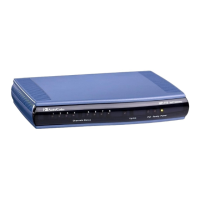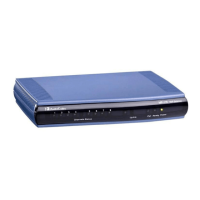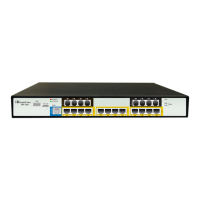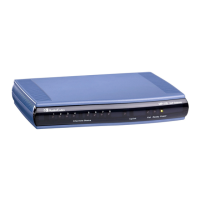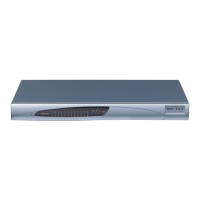AES-CM encryption with a 128-bit key and HMAC-SHA1 message
authentication with a 32-bit tag.
Note: This parameter also affects the selection of the crypto in the
device's answer. For example, if the device receives an offer with two
crypto lines containing HMAC_SHA1_80 and HMAC_SHA_32, it uses
the HMAC_SHA_32 key in its SIP 200 OK response if the parameter
is set to 2.
Web: Disable Authentication
On Transmitted RTP
Packets
EMS: RTP
AuthenticationDisable Tx
[RTPAuthenticationDisable
Tx]
Enables authentication on transmitted RTP packets in a secured RTP
session.
[0] Enable (default)
[1] Disable
Web: Disable Encryption On
Transmitted RTP Packets
EMS: RTP
EncryptionDisable Tx
[RTPEncryptionDisableTx]
Enables encryption on transmitted RTP packets in a secured RTP
session.
[0] Enable (default)
[1] Disable
Web: Disable Encryption On
Transmitted RTCP Packets
EMS: RTCP
EncryptionDisable Tx
[RTCPEncryptionDisableT
x]
Enables encryption on transmitted RTCP packets in a secured RTP
session.
[0] Enable (default)
[1] Disable
43.4.4 TLS Parameters
The Transport Layer Security (TLS) parameters are described in the table below.
Table 43-23: TLS Parameters
Parameter Description
Web/EMS: TLS Version
[TLSVersion]
Determines the supported versions of SSL/TLS (Secure Socket
Layer/Transport Layer Security.
[0] SSL 2.0-3.0 and TLS 1.0 = (Default) SSL 2.0, SSL 3.0,
and TLS 1.0 are supported.
[1] TLS 1.0 Only = only TLS 1.0 is used.
When set to 0, SSL/TLS handshakes always start with SSL 2.0
and switch to TLS 1.0 if both peers support it. When set to 1,
TLS 1.0 is the only version supported; clients attempting to
contact the device using SSL 2.0 are rejected.
Note: For this parameter to take effect, a device reset is
required.
Web: TLS Client Re-Handshake
Interval
EMS: TLS Re Handshake Interval
[TLSReHandshakeInterval]
Defines the time interval (in minutes) between TLS Re-
Handshakes initiated by the device.
The interval range is 0 to 1,500 minutes. The default is 0 (i.e.,
no TLS Re-Handshake).
